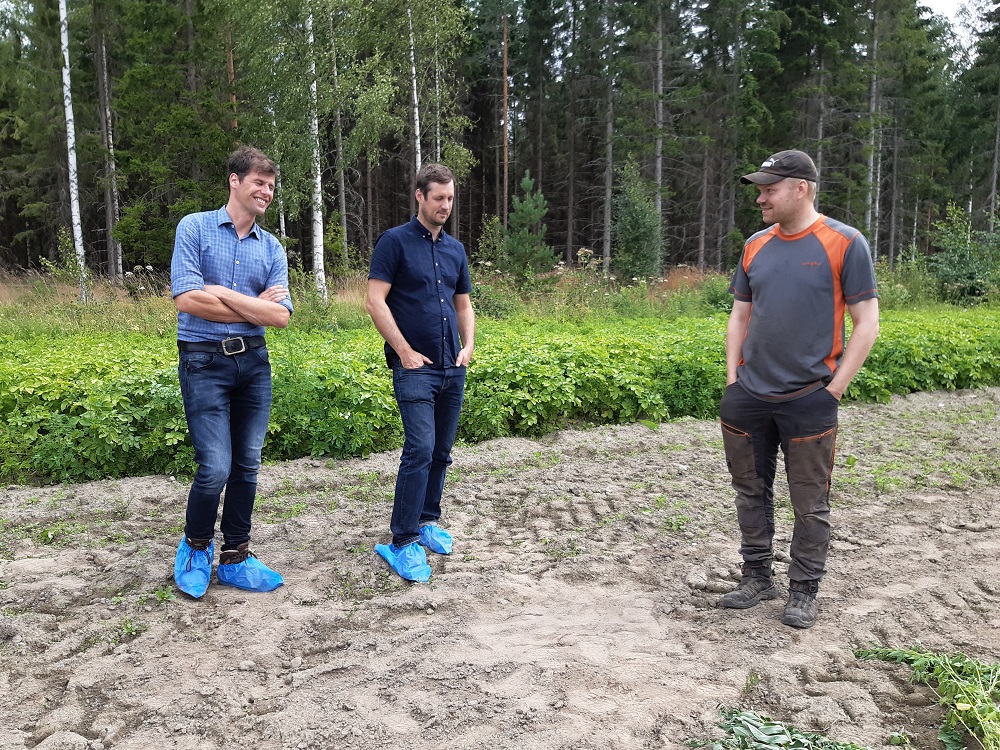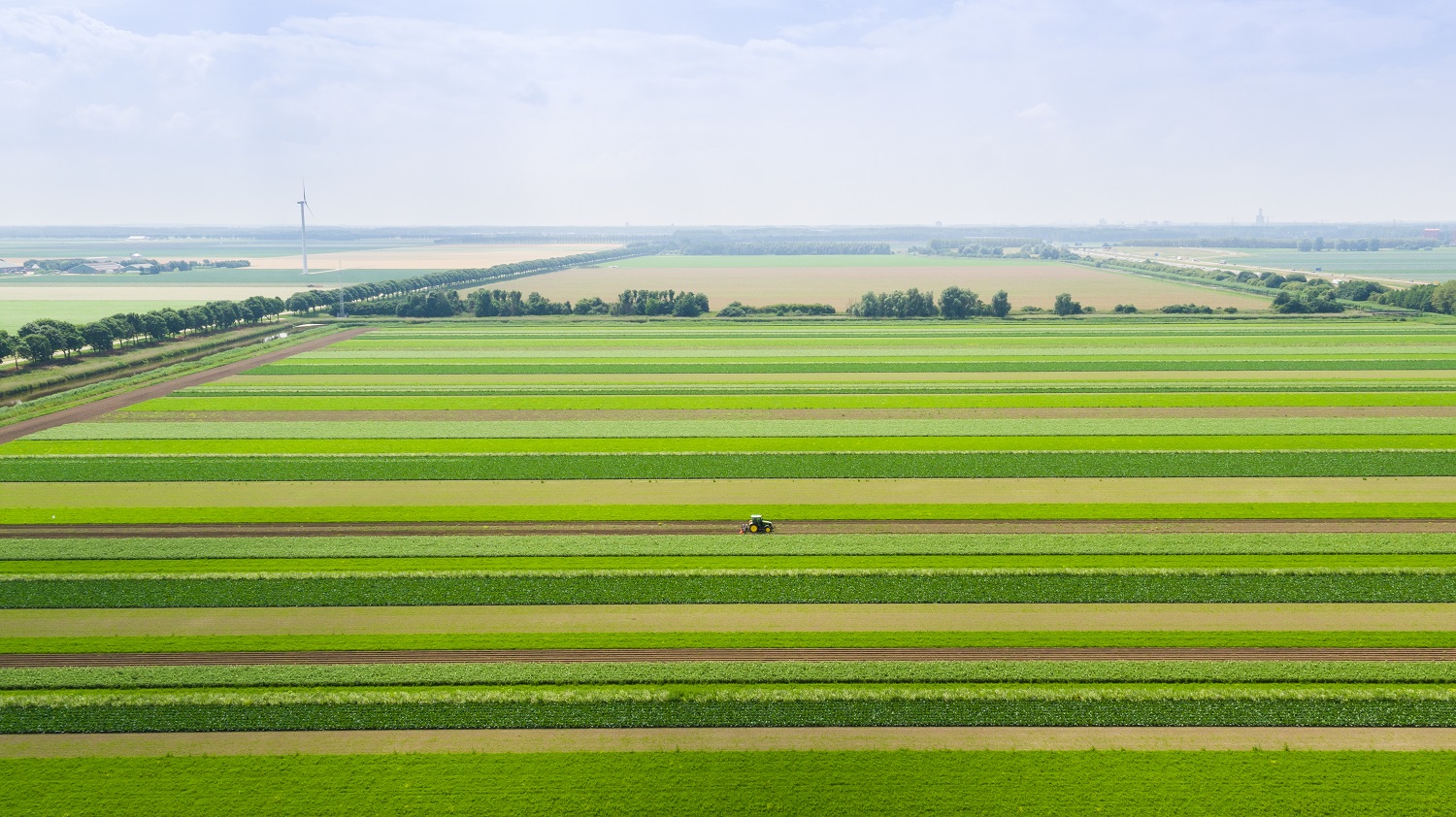The Global Network of Lighthouse Farms led by Wageningen University & Research in the Netherlands brings together pioneers in sustainable food production – farms of the future. The network’s 12 farms from across the world are still exceptions to the rule of high-efficiency farming, but seek to lead the way in sustainable food production that addresses local conditions. Roy Michielsen from the ERF, a Dutch farm included in the network, visited the Knehtilä farm, another farm of the network, in Palopuro in Finland. Members of the network are encouraged to visit the network’s other farms, as interaction and cooperation between farms is key in the network’s activities.
The farms and communities of the Global Network of Lighthouse Farms aim to increase our scientific understanding of the principles and practices of sustainable production and offer examples of various sustainable farming systems that may revolutionise long-established practices and paradigms. Where an Ethiopian farm is testing community based land governance structures, a Cuban farm is experimenting organic urban farming and a Spanish farm regenerative organic production. Furthermore, a rural community in Columbia is testing and developing sustainable solutions for adaptation to climate change between farmers, researchers, the private sector and society at large as part of the climate smart villages project.
Even though the farms are very different from one another, shaped by local conditions, they all share certain characteristics: cooperation and co-creation, an unprejudiced enthusiasm to test something new, diversity instead of homogeneity, as well as knowledge production.
In this network of farms of the future, organic production plays a key role, and half of the network’s farms have an organic certification. One of the network’s organic farms is Knehtilä in Finland, which acts as a hub for the Palopuro agroecological symbiosis. It is a cooperation network of organic farmers which seeks a farming system self-sufficient in nutrients and energy. The production model of an agroecological symbiosis represented by the farm is even more topical in the current light of multiple crises. It helps to reduce dependence on fossil fuels and external production inputs to increase self-sufficiency and lay a more solid foundation for the security of supply.
“In Palopuro, our aim is to find synergies between bioenergy and food production. Through biogas production, crops can more effectively use the nutrients bound in green fallows in organic farming than in the conventional way of mixing grasslands directly with the soil,” Kari Koppelmäki says.
Solutions for resilience through strip cropping
Roy Michielsen who visited Palopuro in August works as a staff employee on ERF, a Dutch farm and member of the Global Network of Lighthouse Farms. ERF is the largest private organic farm in the Netherlands, with some 15 different crops ranging from cereals to peas, beans and spinach being grown over 1,500 hectares. The farm tests various mixed cropping systems, strip cropping in particular, in which crops are grown literally in strips.
“Our goal is to build a more resilient farming system in which crops are less vulnerable to pests and diseases, and biodiversity increases, while maintaining the efficiency of monocultures,” Michielsen says.
Currently, two fields are dedicated to strip cropping, one of which tests the impact of the strip length (6, 12 and 24 meters) on pests and diseases, as well as efficiency, and the other tests interaction between different crops.
According to Roy, the experiences with strip cropping have been really promising. Productivity is on par with monocultures or even higher for certain crops, while at the same time crops are less vulnerable to pests and diseases. For example, the farm has significantly decelerated the spread of the potato late blight fungus on its fields. Strip cropping also has a positive impact on biodiversity in the agricultural environment.
Higher productivity can partly be explained by fields having more “edges” when divided into strips. It is a well-known fact that certain crops produce higher yields at the edges of fields than in the middle. This impact can be multiplied through strip cropping. Research aims to identify the impact of strip cropping on the yields of various crops in the middle of the strips, at the edges and relative to adjacent crops.
However, the challenge is to find machines that are suitable for strip cropping and as effective as in monocultures. The procurement of harvesting and irrigation machines has proven a particular challenge.
“We can still cope with our current arrangements and six-meter-wide strips, but the situation is not optimal yet,” Michielsen says.
Insights through cooperation
The network is based on extensive cooperation between farmers, researchers, students and decision-makers. Various methods, models, indicators and tools are developed together to improve the sustainability of food production systems.
Another goal is that the network’s members visit each other’s farms to learn about and get inspiration from them and their different contexts. Michielsen’s visit to Knehtilä’s organic farm and organic fields in Southern Savonia raised many new ideas in everyone’s minds.
“It was extremely interesting and inspiring to see how different parties can work together in the Palopuro agroecological symbiosis, and how energy generation can truly be integrated on a farm scale. Even though I work in different farming and market conditions, it’s important for me to see and understand how organic farming is arranged in Finland, what works here and, then again, what challenges you have,” Michielsen says.
“For me, it was interesting to hear how large-scale organic vegetable production runs in the Netherlands. Even though the production environments are quite different, most crops are the same as here. For example, testing strip cropping in Finland would be very interesting,” Koppelmäki says.

Radical, but realistic, new ideas are needed
The network’s farms are described as positive deviants that are already in 2050. Currently, they express fairly radical approaches that are needed to perceive and realize the future of sustainable food production. The necessary sustainability transition in agricultural and more broadly in food systems calls for a shift away from many established ways of thinking and working – a paradigm shift.
However, food systems need to change rapidly, and extensive solutions should be found and applied urgently. According to Michielsen, changes are already in sight, and interest in and awareness of other farming practices are increasing, but we still have a long way to go to a more radical change in food systems.
“In the Netherlands, we have more and more farms that have started strip cropping and are trying to find solutions for the current sustainability challenges. Then again, it is even more urgent to find solutions and steer farms towards more sustainable production, especially due to climate change and the nitrogen crisis,” Michielsen says.
“In Finland, farms’ interest in biogas production has increased significantly in recent years. It should however be remembered that the most advantages can be obtained when energy generation is integrated effectively with food production. Biogas production is especially applicable to organic farming if it can improve the efficiency of nutrient recycling in the system,” Koppelmäki says.
Read more:
Global Network of Lighthouse Farms.
Palopuro Agroecological Symbiosis.
Text: Milla Seiro
